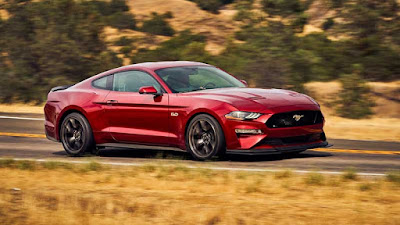In what is perhaps the longest-running automotive rivalry, we've been comparing Mustangs and Camaros for 50 years; about 20 times as of this writing. Most recently, seven months ago, we pitted a Camaro SS 1LE against a Mustang GT Performance Pack (now dubbed "Level 1") in a comparison test. Senior features editor Jonny Lieberman then said, "To put it bluntly, the Camaro is in another league," and "in the ways that actually matter to car guys, the 2018 Mustang got its butt handed to it." At that time, Ford indicated there would be a PP2 but that it wouldn't be ready until summer. Well, here we are. In what Ford describes as an after-hours skunkworks prototyping program with track-rat Ford engineers, the PP2 would surely address the performance gap with the Camaro 1LE, right? They had their benchmark and a grudge to settle. MT technical director Frank Markus does an excellent job unpacking all of the Performance Pack 2 changes here, but essentially it contains all of the items below from the $3,995 Performance Pack (PP1):
Spun aluminum instrument panel with oil pressure and vacuum gauges
- 19 x 9.0-inch front; 19 x 9.5-inch rear cast aluminum wheels
- 255/40R19 front; 275/40R19 rear summer tires
- Brembo six-piston front brake calipers with vented 15.0-inch front/13.0-inch rear rotors
- Firmer springs (than standard GT)
- MagneRide Damping System
- Underhood strut tower brace
- Undercarriage K-brace
- Larger rear anti-roll bar (than standard GT)
- Larger radiator (than standard GT)
- Rear wing
- A 3.73:1 ratio, Torsen limited-slip differential
- Unique stability control, electric power-assisted steering, and ABS tuning
Safe Link Converter
Encrypting your link and protect the link from viruses, malware, thief, etc!
Made your link safe to visit.
Made your link safe to visit.
How to use our tool:
- Click on How To Use menu above.
- Click on the code and CTRL + C on your keyboard.
- Paste the code in your HTML blog theme before the </body>.
- Save your HTML blog theme. you are done!
- Now, your blog's outbound links was encrypted!
Your link show here
And for an additional $2,505 ($6,500 total), the fastback six-speed manual-only Mustang GT Performance Pack 2 further adds/replaces:
- 19 x 10.5-inch front, 19 x 11.0-inch rear forged aluminum wheels
- Michelin Pilot Sport Cup 2 tires, 305/30R19 at all four corners
- 20 percent again stiffer springs up front; 13 percent stiffer in the rear
- Front and rear anti-roll bars that resist twist by an additional 12 and 67 percent, respectively
- Retuned MagneRide Damping System with track calibration
- High-performance front splitter and rear spoiler
- Further stability control, electric power-assisted steering, and ABS tuning
At 4.3 seconds to 60 mph, it eked a 0.1-second lead over the PP1-equipped GT. This also makes it the third-quickest stock Mustang we've tested. The 2018 Mustang GT with a 10-speed automatic got there in 3.9 seconds, and the 200-pounds-lighter 2012 Boss 302 Laguna Seca in 4.0 seconds. Expectedly, both the PP1 and PP2 (with the same 460 horsepower) cross the quarter-mile finish line in an identical 12.6 seconds, but the downforce-optimized aero package on the PP2 GT finds it going slower at 113.5 mph to the PP1's 115.1 mph trap speed.
Too bad for both of them that the torque-rich Camaro SS 1LE (455 lb-ft versus the Mustang's 420 lb-ft) reached 60 mph in 4.0 seconds flat. My track-day notes on the Camaro hint at a couple reasons why: "Well, there are two ways to skin this cat: either almost bog the SS off the line then go to wide-open throttle, or you can slightly raise the launch rpm and ride out some easily controlled wheelspin. Both work to the same end with the latter being more consistent. The short-throw shifter is terrific, and the no-lift-shift program is awesome. Ford could learn a 'thinger two' from this Camaro."
That's right. During the entire quarter-mile run, a driver can keep the throttle pedal pinned to the firewall in the Camaro SS. Just kick the clutch pedal and grab the next gear while the engine belches/waits a split second for the clutch to engage again before giving full power back. Do it right, and it practically feels/sounds like an automated manual transmission. Back-to-back runs prove it's measurably quicker exploiting no-lift-shift. In the end, it was a close virtual race, but again, the Camaro SS 1LE wins the drag race against both of the Ford GTs (PP1 and PP2) with its own 12.4-second 114.2-mph pass.
